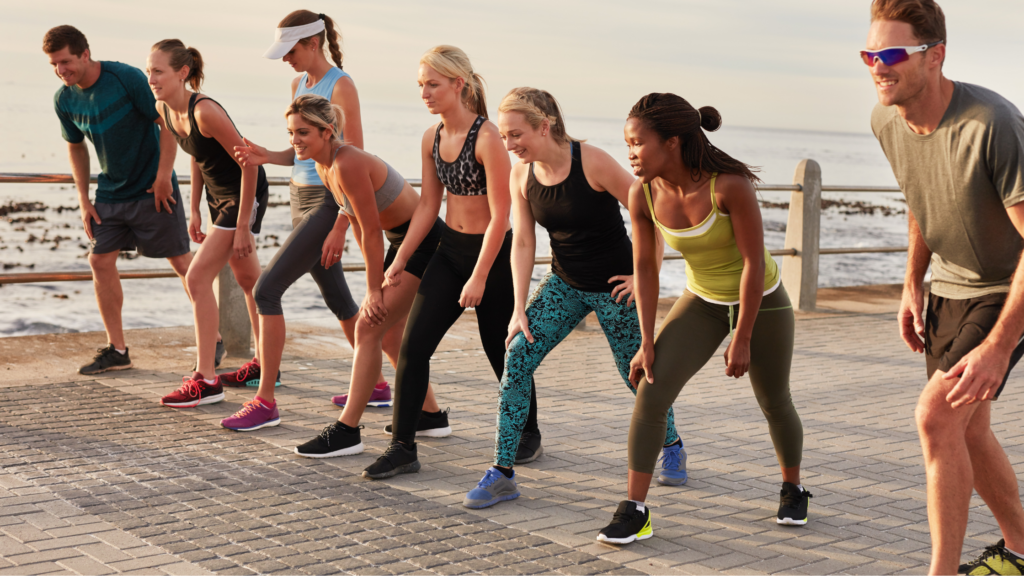As China’s sports industry accelerates its growth, sports marketing in China is quickly rising as a strategic focus for brands. From 2017 to 2023, the industry’s total output jumped from RMB 2.2 trillion to nearly RMB 3.7 trillion, with an average annual growth rate of 8.93%. According to China’s 14th Five-Year Plan for Sports Development, this figure is expected to surpass RMB 7 trillion by 2035—accounting for over 2.5% of national GDP.
Amid this upward trend, sports marketing in China is no longer just a branding tactic. It’s becoming a vital pathway for brands to build relevance, foster deeper consumer engagement, and drive long-term impact.
Emerging Trends in China’s Sports Market
China’s passion for sports is reaching new heights
In 2024, major international events like the Paris Olympics sparked a wave of enthusiasm across the country. While 2025 is typically seen as an “off year” for global sports, local engagement remains strong. One standout example: the Suzhou City Football League (“Su Chao”) held in June 2025 attracted 180,000 in-person spectators and 2.6 billion views on Douyin, despite tickets being priced as low as RMB 10. The event also drove a 14.63% increase in local cultural and tourism spending.
Fitness is becoming a daily lifestyle in China
Sports in China are shifting from professional arenas to everyday life. Young consumers are moving from being mere spectators to active participants—embracing jogging, cycling, frisbee, and even casual badminton games in the office. Exercise has evolved into a social activity and cultural expression, especially among the Gen Z and millennial demographics.
Sportswear is turning into lifestyle fashion in China
The rise of “athleisure” is transforming the way Chinese consumers dress and shop. Sport-inspired styles like Urbancore and Gorpcore are trending on platforms like Xiaohongshu. Between January 2024 and April 2025, searches for terms like “jersey styling” and “badminton racket colors” surged significantly. The focus has shifted from pure functionality to aesthetics and scene-based versatility—offering brands new opportunities to position sports gear as lifestyle-driven products.

How to Execute Sports Marketing on Chinese Social Platforms
As the concept of “sports as a way of life” deeply takes root, social platforms have become critical channels for sports brands to connect with Chinese consumers. From raising brand awareness to driving sales conversion, brands must thoroughly understand each platform’s content ecosystem and user psychology. This enables the development of tailored operational strategies that truly resonate.
Xiaohongshu: Creating Authentic, Lifestyle-Driven Sports Scenes
On Xiaohongshu, sports are no longer exclusive to professional athletes—they have become an everyday part of users’ lives. Content ranges from sneaker styling and parent-child activities to home workouts and sports rehabilitation, with lightweight content quickly gaining widespread attention. For example, notes related to “post-work exercise routines” have exceeded 14.6 million, while “jersey styling” content has surpassed 220,000 posts.
In Q1 2025, the popularity of ball sports content on Xiaohongshu grew by 74% year-over-year. This trend shows that the platform is becoming a key battleground for brands to understand user interests, spark purchase intent, and drive sales in relevant scenarios.
For brands aiming to achieve effective seeding and conversion on Xiaohongshu, the strategy of “SPU × Audience × Buying Point” is crucial. This means precisely aligning the product (SPU) with the core needs of specific consumer groups within particular scenarios, and conveying product value through content.
For instance, one brand centered around their V2K retro running shoes combined them with items like tennis skirts and camisoles to create a “1+N” product matrix. They focused on topics such as “light outdoor activities” and “commuting styling.” By continuously iterating and testing content placements, the brand accurately identified high-impact touchpoints and concentrated their budget to drive conversion. The outcome was not only the success of individual products but also a significant boost in the entire product line’s sales.
On Xiaohongshu, content is the scenario, and the scenario is the traffic. When products naturally integrate into users’ daily stories, marketing evolves into seamless lifestyle storytelling.
An Expansion Project in China? We Can Help You!
Douyin: Building Immersive Brand Experiences and Interactive Engagement
In contrast to Xiaohongshu’s lifestyle-focused content, Douyin excels at creating mass viral moments and interactive experiences. Leveraging its comprehensive ecosystem of short videos, live streaming, and interactive features, Douyin has become a powerful tool for brands to achieve rapid brand awareness growth and active user participation.
Take the 2025 F1 Chinese Grand Prix as an example. Heineken, as an official event sponsor, launched the #F1ChineseGrandPrix hashtag on Douyin, generating 2.58 billion views and over 18 million interactions. The brand created buzz by involving celebrities like Hu Xianxu and Wang Feifei in teaser videos and launched an F1-themed interactive mini-game, “Player 0.0,” which attracted over 20,000 participants within three days. This significantly boosted brand engagement and interaction.
What’s more impactful is how Heineken transformed the celebrity on-site viewing experience into compelling promotional content. By combining “celebrity × product × scenario,” the brand delivered immersive resonance on Douyin. For example, scenes of stars raising glasses at the Pitwall Bar authentically recreated the race atmosphere and sparked emotional connection with users, effectively narrowing the psychological distance between the brand and consumers.
WeChat: Building a Closed-Loop Private Domain Marketing System
As the most widely used social platform in China, WeChat is an essential channel for sports brands to cultivate private traffic pools. Brands can leverage multiple touchpoints, including official accounts, mini-programs, groups, and video channels, to build a complete chain of “content dissemination — user retention — conversion and repurchase.”
Official accounts provide opportunities to publish content such as event guides, sports tips, and athlete stories to enhance user stickiness. Mini-programs can incorporate point systems, lottery interactions, and other gamified elements to boost user engagement. Coupled with coupons and membership systems, these features help drive product conversion.
At key sporting event moments, brands can also use WeChat groups and private domain communities to push real-time updates and organize watch parties. This creates a warmer, more interactive community atmosphere that strengthens user loyalty.
Partner with Staiirs to Excel in Sports Marketing in China
In 2025, Chinese consumers’ passion for sports continues to grow, with sports becoming a lifestyle, aesthetic, and social expression. For brands, sports marketing is no longer just about sponsorships but about building authentic connections through content, interaction, and real-life scenarios.
Whether engaging audiences on Xiaohongshu, driving interactive campaigns on Douyin, or nurturing loyal communities on WeChat, success depends on understanding the unique cultural landscape of sports in China. Brands that tailor their social strategies accordingly will stand out in this competitive market.
STAiiRS, as a marketing expert rooted in China, helps global brands achieve true localization and connect meaningfully with consumers. If you need a strategic partner who knows the market and consumer mindset, STAiiRS is your go-to engine for sports marketing in China.


Recent Comments